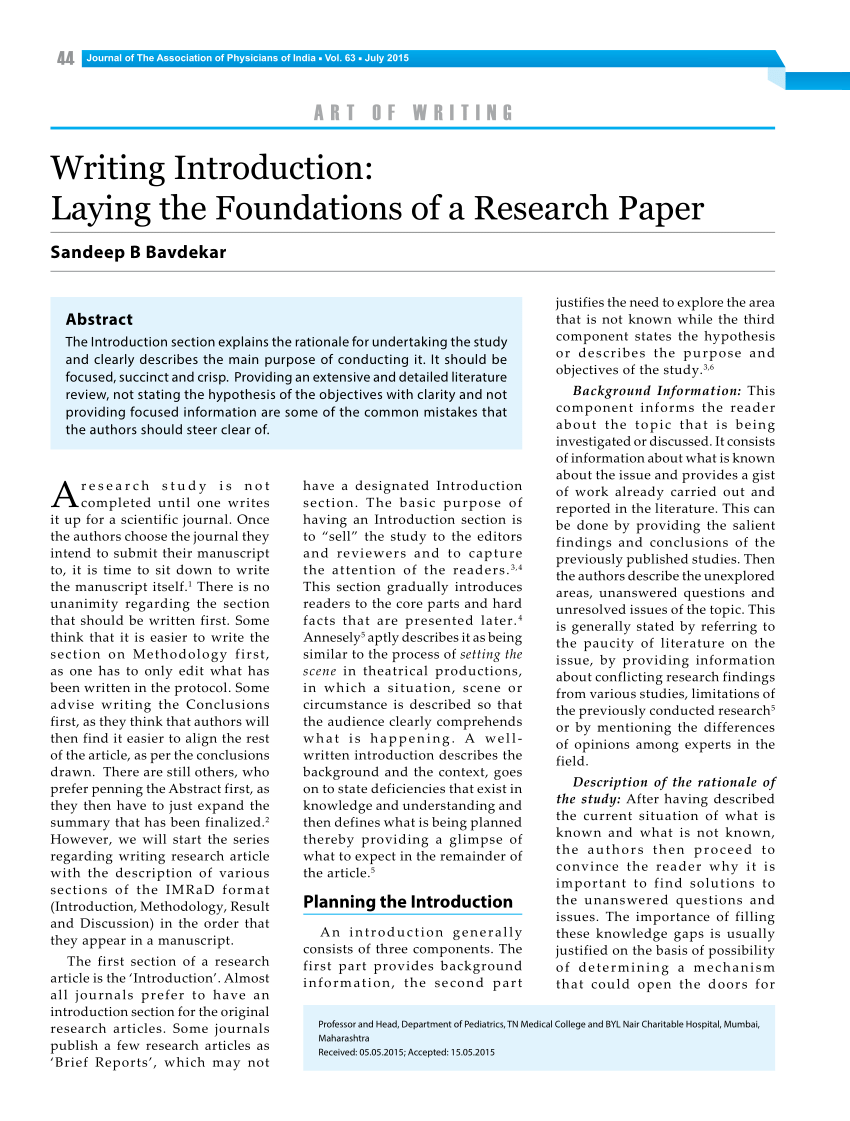The introduction of your research paper should explain what the topic is and the structure of your article. This way, readers can easily navigate the content and ensure that the entire paper makes sense. Writing an introduction for your research paper isn’t as difficult as it seems; even smart students fail to choose a competitive topic and develop a good thesis. In fact, even the most important topics can look questionable to a professor.
Inconsistencies
One of the most common mistakes made by students is the lack of consistency in their introduction. This paper should address why the topic is important and why the research is important. The introduction should also state the major elements of the paper in chronological order. Inconsistencies in an introduction for research paper may cause the entire work to be rejected. Here are some tips to make your introduction more consistent:
An excellent introduction is always organized and cohesive. This is because it brings the information from the research and the writer’s ideas together. When revising your paper, focus on the flow of ideas in your essay and check for consistency of the thesis. Checklist 12.1 can help you with this. The final paragraph of the introduction should also include a brief description of how the rest of the paper will be organized. Once you have identified the main points of your introduction, you should move on to the body of the paper.
Limitations
The limitations of a research paper can serve as a useful discussion piece and help the reader understand the research. Although no study is perfect, it is necessary to point out any limitations. In fact, many journals require authors to include a section about limitations. Some of these limitations are obvious, such as the small sample size, multiple comparisons without corrections, observational design, and risk of confounding variables. But there are other limitations that may not be as obvious.
The first limitation is the lack of a scientifically valid reason for the study’s limitations. While the limitation does show a grasp of the topic area or scope of a Bachelor’s thesis, stating that the paper does not include further analysis is not a valid scientific reason to do so. Further research needs to be conducted on this topic, but the limits of this research shouldn’t discourage you from writing about it.
Narratives
The use of narratives in a research paper introduction can serve two purposes. First, it helps the reader connect with the subject matter. Second, it helps the writer stay focused. For example, a researcher writing about her experience as a teen mom needs to organize her research into the major events, settings, and characters. Then she can focus on composing the introduction, climax, and conclusion of her research paper.
You can also use the first person pronoun, but do not overuse it. The purpose of your introduction is to set the tone for your paper. It should explain what the paper is about and how it connects to the field of study. Besides being exciting, a narrative can also be informative. In fact, you should always include small details in your introduction, such as the name of the person who lived through the experience.
Grammar
When you’re writing an introduction for a research paper, you’re laying the foundation for the rest of the paper. Use research to support your points and ensure that you are accurate. In your introduction, lay out your research problem or question. Identify relevant literature, and make a brief review of it. After completing this, move on to the main body of the paper. Listed below are some tips on how to write an introduction for a research paper.
The introduction should be short and to the point. Explain the purpose of the research, and make it clear to the reader what the paper is about. Include facts to hook the reader and your thesis statement. Your introduction should also be logical, satisfying the connection of thoughts between the parts of your paper. In addition, the introduction should provide background information and a summary of the research findings. Once the reader is convinced of the topic and the point of view of your paper, you can move on to the body of the paper.
Style
While writing an introduction, there are several things to keep in mind. First, the introduction must lay the foundation for the rest of the paper. If you are going to use research in your paper, be sure to present it accurately and concisely. Next, your introduction must contain the problem you’re trying to address and why you’re interested in it. Ultimately, you’re writing this paper to prove your research. If you’re unsure of what to write in your introduction, read over our article for more information.
The next thing to keep in mind is how you’ll cite your sources. In APA style, you don’t have to write about every study. Some may use similar methodologies, so you don’t have to describe every detail of them. Instead, sum up the most relevant articles and describe how they differ from others. If you’re a newbie, avoid using overt reasons to cite sources, and paraphrase information from other articles.
Size
The size of an introduction for a research paper will depend on the length and content of the research paper. A brief overview of the topic and key terms in the research paper will be included in the introduction. While avoiding copy-pasting or rambling, it’s important to make your introduction as clear and concise as possible. If you’re unsure, consider referring to an example of an introduction to see how they are written.
The introduction section of a research paper can have as little as one to two pages. The major content of the introduction section is background literature and a summary of the topic. It also discusses the organization of the paper. The length of the introduction section varies greatly depending on how well the researcher knows the topic and how they will organize the rest of the paper. It’s best to write an introduction section that’s about three to four paragraphs in length.

